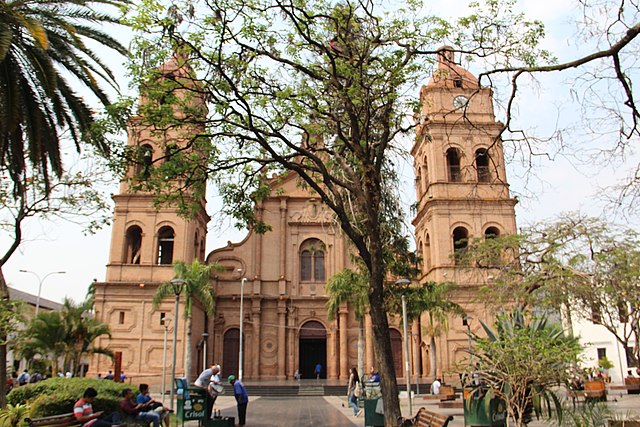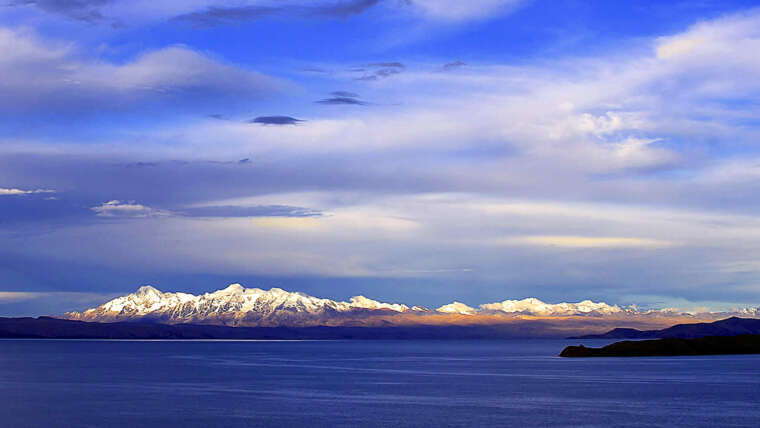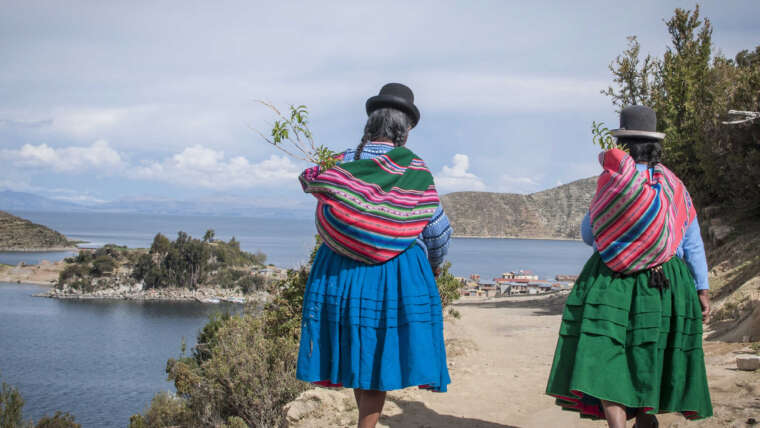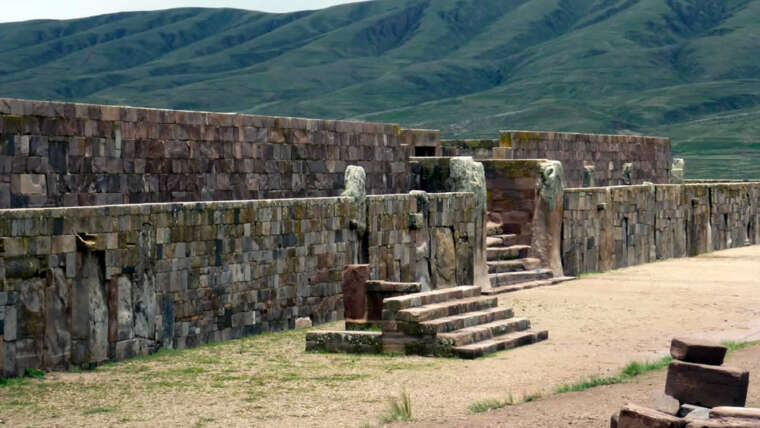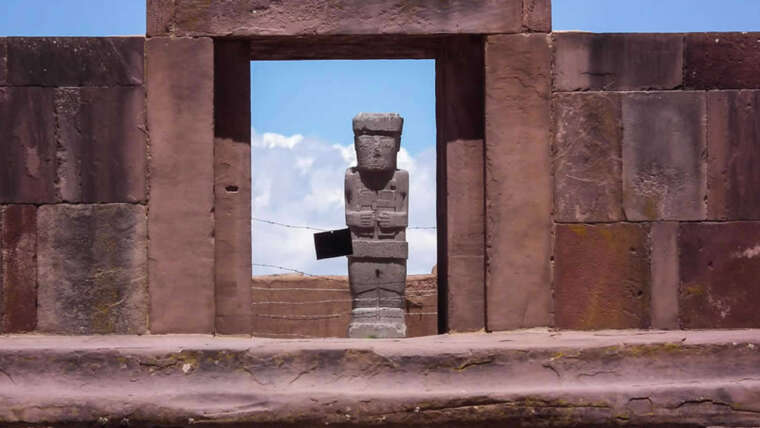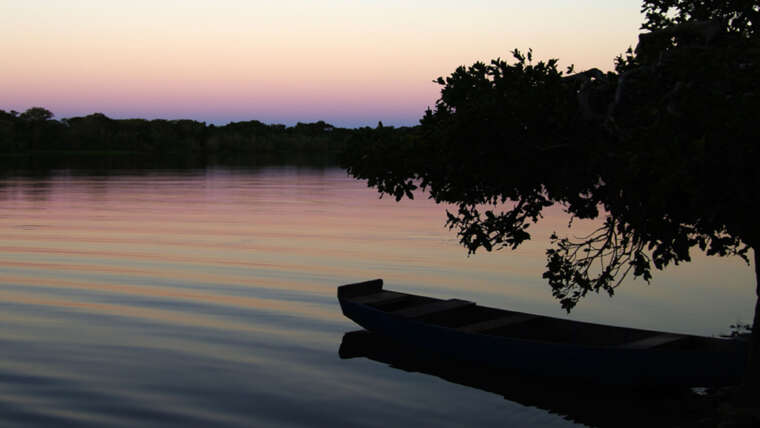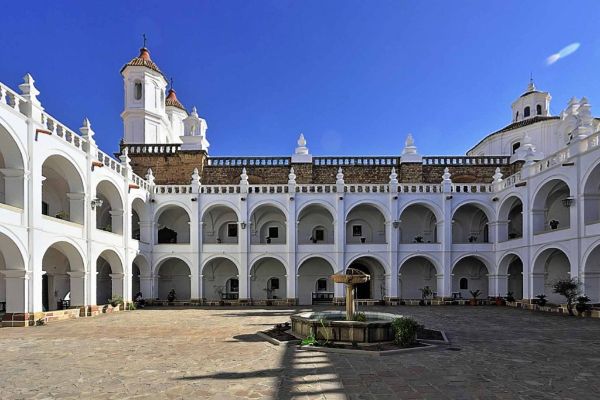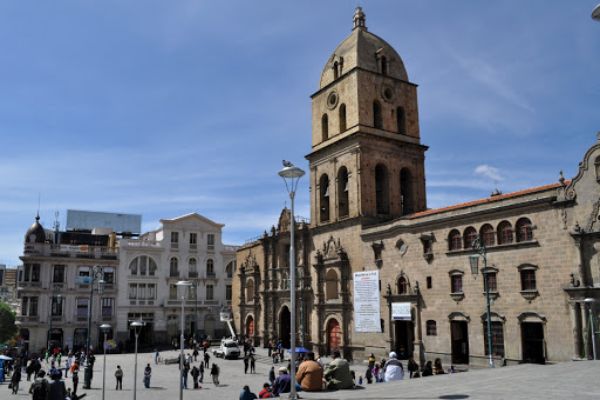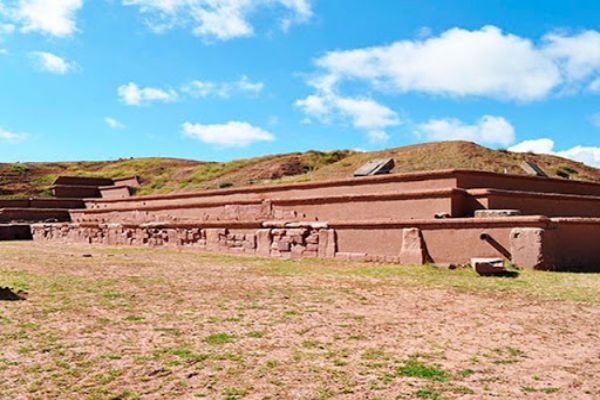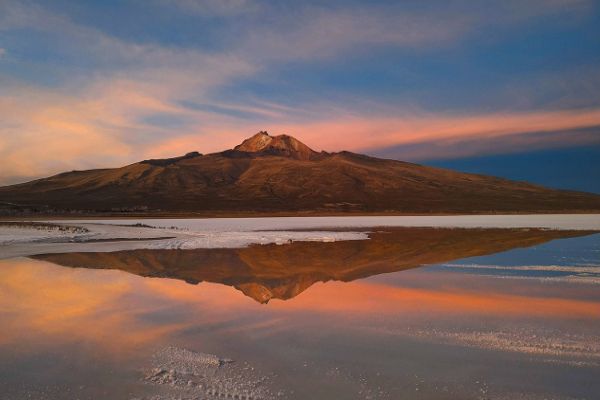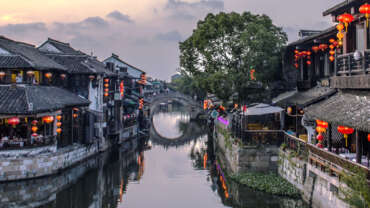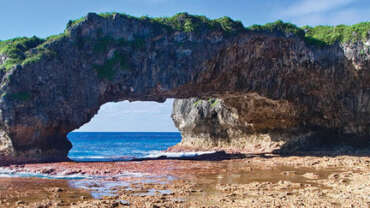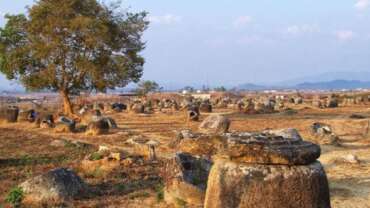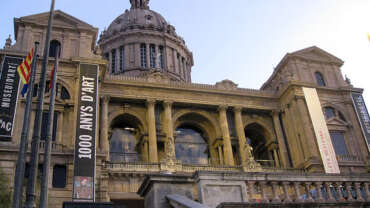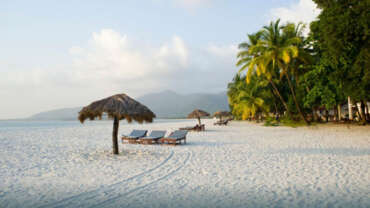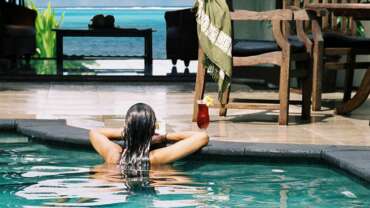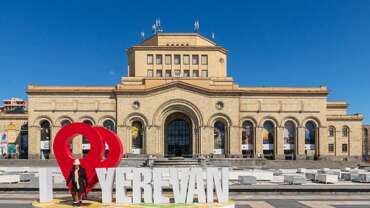Bolivia Awaits You!
Bolivia is a country in central South America, with a varied terrain spanning Andes Mountains, the Atacama Desert and Amazon Basin rainforest. At more than 3,500m, its administrative capital, La Paz, sits on the Andes’ Altiplano plateau with snow-capped Mt. Illimani in the background. Nearby is glass-smooth Lake Titicaca, the continent’s largest lake, straddling the border with Peru.
History of Bolivia
The following discussion focuses on events in Bolivia since the time of European conquest. For events in a regional context, see Latin America, history of, and, for in-depth treatment of events prior to the conquest, see pre-Columbian civilizations: Andean civilization.
Early period
Bolivian society traces its origins to the advanced pre-Columbian civilizations of South America. The high Bolivian plateau known as the Altiplano was already densely populated several centuries before the Spanish conquest in the 16th century.
From the 7th century the Tiwanaku (Tiahuanaco) empire, the first of the great Andean empires to extend over both the Peruvian coast and highlands, had its centre in the Altiplano region. By the 11th century it had reached its apogee and was replaced by simpler regional states.
In the centuries that followed the collapse of Tiwanaku, the Bolivian highland region maintained its dense populations with irrigation agriculture. By the 15th century the region was controlled largely by some 12 groups of Aymara-speaking Indians; they, in turn, fell under the control of the expanding Inca empire, which had its capital in Cuzco (now in Peru). Because the Aymara were the largest and most prominent non-Quechua-speaking group in the empire, they were allowed to retain their language and ethnic identity under Inca rule. However, large numbers of Quechua speakers were relocated to Aymara territories as part of a deliberate Incan policy of colonization. It was this early pattern of colonization and nonassimilation that gave Bolivia its current linguistic and ethnic makeup: Quechua and Aymara are still the two major Indian languages in Bolivia.
Soon after the Spanish conquest of the Inca empire in the early 16th century, much of the Indian population of Bolivia was forced to labour in mines established by the Spaniards. Notable among these were those exploiting the newly discovered (1545) silver deposits of Potosí—the largest silver mines then known in the Western world. The arid, high-altitude mines of Potosí, along with others discovered near the town of Oruro (founded in 1606), were supplied with food and other basic necessities by such towns as Chuquisaca (1538; now Sucre), La Paz (1548), and Cochabamba (1571). From the 16th to the 18th century this central Andean area, known then as Charcas or Upper Peru, was one of the wealthiest and most densely populated centres of the Spanish empire. Its mines were supplied with mitas (conscripted groups) of Indian labourers from throughout the Andes, and by the mid-17th century Potosí’s population had reached some 160,000—a size comparable to that of the largest cities of Europe. This region fell into decay by the last quarter of the 18th century, however, largely because the richest and most accessible veins were exhausted.
Although Potosí continued to be Upper Peru’s most important economic centre, even after mining had declined, Chuquisaca was the intellectual and political focus of the area. Chuquisaca (also known, in the colonial period, as Charcas and La Plata and, since independence, as Sucre) served as the seat of Upper Peru’s government, which was known from its foundation in 1559 as the Audiencia of Charcas. The audiencia was first placed under the Viceroyalty of Peru at Lima, but in 1776 it was finally shifted to the new Viceroyalty of the Río de la Plata established at Buenos Aires (now in Argentina). With its academies and universities, Chuquisaca was the major educational centre for the entire Río de la Plata region.
In the late 1770s and early ’80s, Indians in the highlands took part in widespread uprisings, most notably the revolt of Túpac Amaru II, which was carried out in the hope of reestablishing the Inca empire. These actions caused many casualties, and La Paz was besieged twice for several months, but eventually the rebel leaders were defeated and executed.
In 1809 Chuquisaca and La Paz became two of the earliest cities to rebel against the colonial government appointed by the new Napoleonic ruler of Spain. Many historians have considered this action to be the beginning of the wars of independence in Latin America. Although viceregal authorities in Lima quickly put down the rebellions, similar uprisings were successful in the viceregal capital of Buenos Aires. From that city several revolutionary armies were dispatched without success to liberate Upper Peru; however, the guerrilla units formed in the rugged countryside of Upper Peru kept the revolutionary movements alive for some 16 years. In 1825 an army under the leadership of Marshal Antonio José de Sucre liberated Upper Peru with the aid of defecting royalists, who were mostly Creole elites. The defectors convinced Simón Bolívar and Sucre to allow autonomy for Upper Peru rather than union with either Peru or Argentina, and on August 6, 1825, an Upper Peruvian congress declared the country independent. Few of the guerrilla commanders, representing a more humble constituency, were able to become part of the Creole elite-led government.
Bolivia from 1825 to c. 1930
In recognition of Bolívar’s support, congressional leaders named the new republic Bolivia in his honour, and they invited Sucre, his chief aide, to be the first president.
Foundation and early national period
The new republic was not as viable as its leaders had fervently hoped it would be. Its economic growth was retarded, despite the region’s immense mineral wealth and its historical prominence, because the decline in mining during the 18th century had given way to severe depression resulting from the wars of independence. Between 1803 and 1825 silver production at Potosí declined by more than 80 percent, and, by the time the first national census was taken in 1846, the republic listed more than 10,000 abandoned mines.
Bolivia became known as one of the more backward of the new republics. It rapidly lost its economic standing within Spanish America to such previously marginal areas as the Río de la Plata region and Chile, which were forging ahead on the basis of meat and cereal production. Bolivia, on the other hand, was a net importer of basic foods, even those consumed exclusively by its Indian population. The Bolivian republic, with little trade to tax and few resources to export, instead relied on direct taxation of its Indian peasant masses, who made up more than two-thirds of the estimated 1,100,000 population in 1825. This regressive form of taxation was a major source of revenue until the last quarter of the 19th century.
Economic decline was mirrored by political conflicts and a disregard for democratic principles. Bolivia emerged with a series of military strongmen (caudillos), among whom was Marshal Andrés de Santa Cruz, president in 1829–39. Santa Cruz temporarily reorganized state finances in an effort to repair the war-torn economy, and he pursued policies of territorial expansion. In the 1830s he overthrew the Lima regime of General Agustín Gamarra and united Bolivia and Peru into a short-lived government known as the Confederation (1836–39). A combined force of Chileans and nationalistic Peruvians destroyed the Confederation, however, and Bolivia quickly turned in upon itself, abandoning further thoughts of regional dominance.
Over the next half-century the Bolivian government attempted to bring its own far-flung regions under centralized control, but Bolivia lacked the population and resources necessary to exploit its Amazonian and Pacific frontiers. Despite the enormous wealth in nitrates (notably saltpetre and guano) on the Bolivian Pacific coast, the country proved incapable of mining them, even with the help of foreign capital, mainly because Bolivia’s upper class remained committed to mining on the Altiplano. Instead, the nitrates were exploited by Peruvian, Chilean, North American, and British companies, and disputes over the taxation of exports led to the War of the Pacific.
People of Bolivia
Ethnic groups
The population of Bolivia consists of three groups—Indians (indigenous people), mestizos (of mixed Indian and European descent), and people of European (mainly Spanish) descent. After centuries of intermixing, it is difficult to determine the proportion of each, but it is estimated that mestizos form more than two-thirds of the total, Indians make up about one-fifth, and people of European ancestry (whites) account for about one-twentieth of the population.
The largest Indian groups are the Aymara, Quechua, and Guaraní. The Aymara, who speak a guttural language, live mainly on the northern and central Altiplano. The Quechua, direct descendants of the Inca, are found in the southern Altiplano and on nearby mountains as well as in the valleys of Cochabamba, Chuquisaca, and Potosí. Guaraní communities, such as the Chimane, Mojeno, Guarayo, and Chiquitano, live in the lowland forests and savannas of southern Santa Cruz department, and the departments of Chuquisaca and Tarija. The great majority of Bolivian Indians are farmers, miners, and factory or construction workers. However, an increasing number have become professionals, and Aymara and Quechua political leaders have been elected to Congress. (Victor Hugo Cardenas, an Aymara from the shores of Lake Titicaca, served as vice president of Bolivia in 1993–97, and in 2006 Evo Morales, also an Aymara, became the country’s first Indian president.)
In the cities the mestizos, many of whom are either migrants from rural areas or their descendants, are well represented in the offices, trades, and small businesses. The traditional European minority—those of Spanish descent—have long formed the local aristocracy in small towns and rural areas. Their influence remains, although it has diminished since the National Revolution of 1952.
In addition to immigrants from Germany, the Balkan region, Japan, and England, the country has received Mennonites from Mexico and Paraguay. Many foreigners who worked in the highland mining centres of Potosí and Oruro eventually settled in Bolivia and have played an important role in the country’s political, economic, and social life. Small numbers of Germans arrived in the late 19th and early 20th centuries and established themselves, with notable success, as business agents and entrepreneurs, shopkeepers, and accountants. Japanese and Okinawan farmers, who first arrived in 1899 and were followed by many thousands in the late 1950s and the ’60s, have made major contributions to the economy of Santa Cruz.
Languages and religion
Spanish and 36 indigenous languages are official in Bolivia per the 2009 constitution. Previously only Spanish, Aymara, and Quechua were official languages of the country. Many Indians, particularly in the cities, market towns, and new colonies, speak or understand Spanish.
The proportion of Roman Catholics has decreased slowly but still accounts for more than three-fourths of the population. A primate cardinalship, located in Sucre, heads the church hierarchy in Bolivia. Since the 1940s the Roman Catholic Church has ventured from an almost exclusively ceremonial role into the fields of social aid, the news media, and education. In the late 20th century membership grew in various Protestant denominations (notably Evangelical churches), and there were also increasing numbers of Bahāʾīs and Mormons. Bolivia has a small Jewish community.
Some characteristics of pantheistic pre-Columbian religion have survived in the Indian communities of the Altiplano, especially the worship of Pachamama, the goddess of the Earth. Also worshiped is the sun god, legendary creator of the first Inca emperor Manco Capac and his sister-wife Mama Ocllo on the Island of the Sun in Lake Titicaca. Through the centuries, the Roman Catholic Church has accepted some indigenous rituals and customs by assimilation, mainly through combined Catholic and traditional celebrations that continue to be an important part of life in rural and urban settings. For example, in the mining cities of Potosí and Oruro, tens of thousands of Bolivians and foreign tourists celebrate Carnival by paying homage to the Virgin of the Mines and to Pachamama. During the festival, dancers wear elaborate masks and outfits that depict devils, their blue-eyed mistresses, Inca rulers, and African slave drivers. In the mines, llamas are sacrificed as part of the worship of Pachamama and of Tío, the protector of the mines.
Art & Culture of Bolivia
The arts
The combination of Indian and European cultural influences in Bolivia has produced a thriving artistic community, and Bolivians have gained prominence in painting, sculpture, classical and traditional music, and folk dancing. Numerous theatres and art galleries in the major cities provide examples of traditional Bolivian music and art. The most prominent museums are the National Museum of Art (1964) and the National Museum of Archaeology (1846), both in La Paz, and the Casa de Moneda National Museum (1938) in Potosí. On La Paz’s Calle Jaen are the Casa de Murillo ethnographic museum (1950) and other small museums exhibiting traditional gold, silver, and textile art. Jewelry in silver and gold, with pre-Columbian decorations and styles, has been made in Bolivia for centuries, and the local markets offer a profusion of colourful handicrafts and fine wood carvings.
Various exhibits, conferences, and lectures are organized at the Bolivian American Centre, L’Alliance Française (a French cultural institute), the British Council, the Goethe Institute, and the Casa de España (Spanish Institute) of Santa Cruz. The nation’s most extensive library holdings are at the University of San Andrés, and there is a smaller collection at the National Library of Congress. The National Archives are in Sucre. The National Symphony Orchestra in La Paz offers regular performances and special concerts for children and for residents of the less developed areas of the city. Choral and native dance groups are found throughout the nation. Educational centres for children include the Kusillo Children’s Museum in La Paz and the Tanga Tanga Children’s Museum in Sucre.
The dozens of Roman Catholic churches and cathedrals, mostly dating from colonial times, constitute a national architectural treasure. They are generally ornamented in an extravagant Baroque style, although some are in Renaissance (e.g., the Cathedral of La Paz) or later styles. The church has supported the restoration and revival of several Jesuit mission churches in the lowlands of the Oriente. In the city of Potosí stands the impressive Casa de Moneda (Treasury House, or Royal Mint), which produced coins for Spain’s American colonies. Under Spanish direction the city’s inhabitants built numerous churches that were decorated with exquisite gold-leaf altars, paintings, and frescoes. Potosí, which is one of the few cities in Bolivia to retain its colonial architectural character, was designated a UNESCO World Heritage site in 1987.
Cultural Life
Traditional culture
Bolivian society embraces a mixture of diverse and extraordinarily rich native Indian cultures as well as the Iberian culture brought by the Spaniards. On religious feast days, for example, pre-Columbian rites are practiced in conjunction with Roman Catholic celebrations, and Aymara, Quechua, and other ethnic groups express themselves through dances and songs that blend indigenous and European influences. During such festivities, symbolic dress shows the Indian interpretation of European attitudes: the dance of the palla-palla caricatures the 16th-century Spanish invaders, the dance of the waka-tokoris satirizes bullfights, and the morenada mocks white men, who are depicted leading imported African slaves. Some highly embroidered and colourful costumes imitate pre-Columbian dress. Many costumes are accompanied by elaborate masks made of plaster, cloth, or tin cans and topped by feather headdresses. The mixture of cultures is also revealed in the music and in the charango, a hybrid instrument that is similar in shape to a guitar, although much smaller; its five double strings resonate on a sound box made from an armadillo shell or a gourd. Other common instruments are the zampoña (panpipes), quena (kena; a notched vertical flute), and percussion instruments of various sizes, including skin drums, bronze gongs, and copper bells. In the lowlands of Santa Cruz and Beni departments, music composed in the 18th century—during the heyday of the Jesuit missions in Latin America—is performed by Guaraní Indians of the Guarayo, Chiquitano, and Mojeno communities.
Highland Indian women in both urban and rural areas still wear traditional multilayered skirts (polleras) and colourful shawls. The shawls may be stuffed with goods being taken to market or with fresh purchases, extra clothing, and a baby, all in a carefully balanced bundle on the back, leaving both hands free. Hats always complete the outfit, their dozens of shapes varying with the different regions of Bolivia and with the marital status of the wearers; for example, in the Quechua town of Tarabuco (near Sucre), single women wear woolen hats, whereas married women don leather hats of a completely different style.
Indians long attempted to imitate Europeans, in custom as well as in dress. However, beginning in the 1940s and especially since the early ’70s, Indian culture and values have been reestablished: traditional music has risen to a higher standard, painters have abandoned the imitation of European fashions, and some of the characteristics of Indian culture have reemerged in the general lifestyle.
Daily life
Bolivian daily life is largely dependent on social class, economic status, and place of residence. Whereas Indian traditions persist throughout the nation, they are more strongly pronounced in rural and working-class areas. Most members of the middle and upper classes, however, tend to aspire toward “modern” or Western cultural ideals in their choices of music, clothing, daily entertainment, reading material, and visual arts, in spite of the increasing amount of respect and interest garnered by indigenous art forms.
Television antennas dot the urban landscape, and televisions and long-distance telephone service are now also found in many rural communities. Because of the high cost of fixed phone service, Bolivians from all walks of life are making use of cellular phones—from Aymara market vendors in La Paz to truck drivers in Cochabamba. Middle- and upper-class households, especially those in the cities, are far more likely to own telephones and computers and to enjoy the offerings of mass culture, from Internet cafés and flashy discotheques to satellite and cable TV programming (including telenovelas [soap operas], game shows, and news) and a wider variety of food, clothing, and public transportation. These enticements are partly responsible for rural-to-urban migration among younger Bolivian adults. The reality of life for the urban poor, however, is far from the ideal.
People in the tropical lowlands generally attend more social gatherings and stay out later than residents of the highlands, where restaurants and clubs tend to close earlier because of the chilly evening temperatures. Shopping is largely defined by social standing: the middle and upper classes shop in malls and supermarkets in wealthier neighbourhoods, whereas lower-income residents save money by visiting open markets. However, members of all social classes visit black market areas, which are found in most Bolivian cities; there they can purchase everything from music recordings to computers and cellular phones.
La Paz - City of Wonders!

The city of La Paz was founded on October 20th, 1548 under the name of La Ciudad de Nuestra Senora de La Paz (The City of Our Lady of Peace).
La Paz is the administrative capital of Bolivia, while Sucre is the constitutional capital and the seat of the Supreme Court. La Paz was established in 1542, and is located in the Andes mountains. Altitude of the city ranges from about 4058 meters (13,313 feet) above sea level in El Alto (where the airport is located) to 3100 meters (10,170 feet) in the lower residential area. It is the highest national capital in the world.
Orientation
La Paz was built in a canyon created by the Choqueyapu River (now mostly built over), which runs northwest to southeast. The city’s main thoroughfare, which roughly follows the river, changes names over its length, but the central tree-lined section running through the downtown core is called the Prado. La Paz geography (in particular, altitude) reflects society: the lower you go, the more affluent. While many middle-class pacenos live in high-rise condos near the center, the really rich houses are located in the lower neighborhoods southwest of the Prado. The reason for this division is that the lower you go in the city, the more oxygen there is in the air and the milder the weather is. And looking up from the center, the surrounding hills are plastered with makeshift brick houses of those struggling in the hope of one day reaching the bottom.
The satellite city of El Alto, in which the airport is located, is spread over a broad area to the west of the canyon, on the altiplano.



